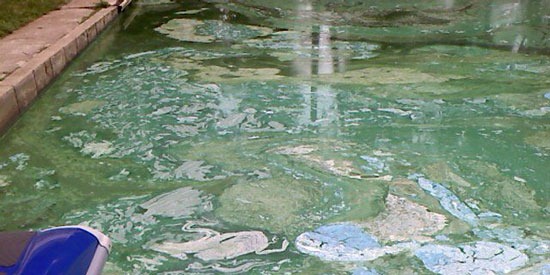Research Brief: Satellite Monitoring of Eutrophication in the Caspian Sea
3Resulting from industrialization, urbanization and the expansion of agricultural runoff, the health of the world’s lakes and waterways is threatened by eutrophication and the environmental degradation associated with the phenomenon. Nutrient loading, also known as nutrient pollution, creates an excess of nutrients like phosphorous and nitrogen in the water, leading to increases in algal blooms and the breakdown of natural nutrient dynamics.

The Caspian Sea from the ISS (Credit: Alexander Gerst via Flickr CC BY-NC-SA 2.0)
While local, federal and international policies have been enacted to help reduce nutrient loading, many of these policies are limited in reach and not always enforced. Highlighting the impacts of eutrophication through long-term monitoring efforts is one way to help support initiatives that work to decrease the influence of eutrophication.
A 2023 study published in GeoHealth aims to highlight the recent spatial-temporal changes in Chlorophyll-a (Chl-a) concentration and the eutrophication of the Caspian Sea using satellite monitoring systems from 2018 to 2021.1
Methods
The Caspian Sea is the largest lake by volume on Earth and is also the recipient of high volumes of nutrient-rich runoff from surrounding countries. As a transboundary lake, the protection of the Caspian Sea has been the subject of regional partnerships and multi-national conventions and regulations for decades. For example, the Tehran Convention was signed in 2003 but has not yet been entered into force.1 As a result, the lake is still heavily polluted.
The study investigates the “spatial-temporal changes in chlorophyll-a concentration and the sea eutrophication using the MODIS-Aqua level 3 satellite data.”1 In addition to the satellite data, the researchers conducted in-situ measurements with a CTD instrument to verify information gathered by the satellite data.
Chlorophyll-a was chosen as the focus because it is the most important photosynthetic pigment in phytoplankton organisms and can often be an indicator of algal blooms. Since algae production is connected to nutrient loading, the pigment is also a good indicator of eutrophication.
Results
The Caspian Sea is expected to continue to see gradual water level declines over the years, increasing its vulnerability to eutrophication. While some areas of the lake have not been impacted by nutrient loading, the eutrophic waters are expected to further cover the sea area in the future due to changes in the water level and large nutrient inputs induced by the intensified agricultural and industrial activities in the watershed.
Both the satellite and CTD data revealed an ever-increasing Chl-a in the shallow zones of the Caspian Sea, a phenomenon that “can amplify eutrophication under the lens of global warming and further threaten the ecosystem health in this transboundary lake.”1 Understanding the future risks, the study highlights the need to start limiting nutrient loading now in order to protect the body in the future.

Spatial distribution of monthly mean concentration of chlorophyll-a (Chl-a) in the Caspian Sea from 2018 to 2021. (Credit: Mozafari et al., 2023)
Sources
- Mozafari, Z., Noori, R., Siadatmousavi, S. M., Afzalimehr, H., & Azizpour, J. (2023). Satellite-based monitoring of eutrophication in the Earth’s largest transboundary lake. GeoHealth, 7, e2022GH000770. https://doi.org/10.1029/2022GH000770














[…] buoys, satellite imagery, discrete sampling, nutrient monitoring and many other prediction or monitoring strategies have […]
[…] the analysis revealed more information on the spatial and temporal dynamics of phytoplankton biomass trends in Lake Erie, the underlying mechanisms are still not well […]
[…] phenomena like eutrophication, which exacerbates the ecological challenges faced by the Caspian Sea [3]. These advancements highlight the importance of integrating technology and interdisciplinary […]